https://medium.com/@oliviero65/ufos-and-the-hidden-truth-revelations-from-ben-rich-8bb1587a0225
Spazio: ultima frontiera. Credere che si sia soli nell'universo è come credere che la Terra sia piatta. Come disse l'astrofisico Labeque al palazzo dell'UNESCO, durante il congresso mondiale del SETI di Parigi del Settembre 2008, " SOMETHING IS HERE", "Qualcosa è qui", e I TEMPI SONO MATURI per farsene una ragione. La CIA, l'FBI, la NSA, il Pentagono, e non solo, lo hanno confermato!
Statistiche
Friday, August 16, 2024
Tuesday, August 13, 2024
Interdimensional UFOs: A Journey into the Mysterious
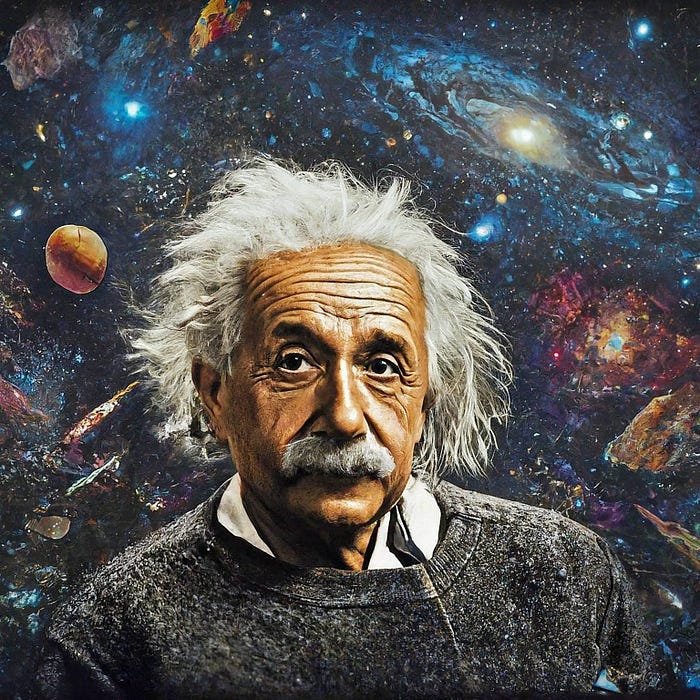
The concept of interdimensional UFOs has sparked significant interest among scientists, philosophers, and enthusiasts of the mysterious. The idea implies that these spacecraft do not originate solely from space but may derive from alternate dimensions. If this were true, we would need to explore advanced concepts of modern physics to understand their origins and behaviors. This article examines various aspects of this theory, drawing on historical, cultural, and scientific references. We will proceed by analyzing extra dimensions, quantum entanglement, spacetime manipulation, and finally the future implications of UFO research.
Concept of Interdimensional UFOs
The term UFO has traditionally referred to unidentified flying objects, but the idea of interdimensionality adds a layer of complexity to the debate. It could encompass the possibility that these objects operate in dimensions invisible to our senses or current instruments. This concept challenges our conventional understandings of space travel, suggesting that UFOs not only move through space but also between different realities. Comprehending this phenomenon could require a complete rethinking of the physical laws as we know them. Let’s now explore how culture and history have fueled and shaped these intriguing ideas.
From the beginning, human civilizations have told stories of visits from the unknown.
In mythology, many ancient peoples describe beings coming from distant skies or dimensions. These narratives are not just legends; they reflect fears and existential questions about the unknown. With the advent of modern technology, experiences of UFO sightings have gained new significance. Popular interest continues to grow, pushing research towards these enigmatic phenomena.
Extra dimensions in theoretical physics
Theoretical physics has proposed that the universe may contain dimensions beyond those perceived. Theories such as string theory suggest that there may be other compactified dimensions. Such dimensions could allow for interdimensional travel, making it possible for UFOs to appear and disappear without any apparent explanation. This raises questions about how UFOs can navigate through unconventional spaces. Let’s now delve into quantum entanglement and its potential link to communication between dimensions.
Quantum entanglement and communication
Quantum entanglement refers to the connection between particles, regardless of the distance separating them. If UFOs utilize such quantum phenomena, their technology could include highly advanced forms of communication. This suggests that we may not fully understand how they operate, and how they can receive and transmit signals across different dimensions. Furthermore, this could explain seemingly coordinated or synchronous behaviors observed in their movements. Let us now proceed to analyze the manipulation of spacetime and how it could facilitate rapid travel.
Spacetime Manipulation and Rapid Travel
General relativity demonstrates that mass and energy can influence the curvature of spacetime. Concepts like warp drive or wormholes suggest that by altering spacetime, it’s possible to travel faster than light. If UFOs utilize such technologies, it would explain many of their impossible maneuvers. The ability to bend spacetime could allow them to appear and disappear inexplicably. Let’s now examine how exotic matter might play a crucial role in UFO technologies.
Exotic Matter and UFO Technology
Exotic matter, with its negative energy density, is a concept that could be fundamental to the advancement of UFO technology. It might be necessary to stabilize wormholes or create curvature fields. If UFOs utilized such matter for propulsion, their technological system would be radically different from any current understanding. This leads us to consider the potential future applications of these theories in UFO research. We now need reflections on future perspectives in the research of these mysterious phenomena.
Future Perspectives in UFO Research
Current UFO investigations and scientific research must integrate advanced theories such as extra dimensions and spacetime manipulation. To confirm any links between physical theories and UFO observations, we need rigorous empirical data. New technologies could reveal previously invisible aspects of these phenomena. This endeavor requires collaboration between scientists, engineers, and researchers. Only then will we be able to approach an explanation that is commensurate with the complexity of the UFO mystery.
Conclusion
In
summary, the concept of interdimensional UFOs represents an intriguing
junction of science and philosophy. While these theories remain
speculative, their exploration could reveal new horizons in our
understanding of the universe. Extra dimensions, quantum entanglement,
and spacetime manipulation offer fascinating avenues for potential
explanations. Future research could reveal that the boundary between
science and mystery is thinner than we imagine. Let us remain curious
and open as we investigate these cosmic enigmas.
Oliviero Mannucci
Source: Medium
UAP Sessions at the 2024 American Institute of Aeronautics and Astronautics Conference
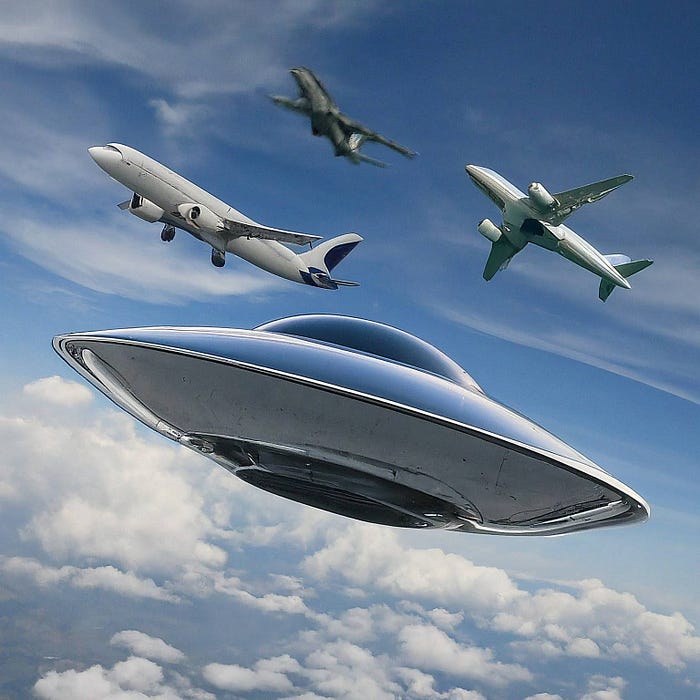
The 2024 American Institute of Aeronautics and Astronautics (AIAA) conference took place in Las Vegas from late July to early August. This event brought together aerospace experts to discuss critical topics, including the Unidentified Aerial Phenomena (UAP) phenomenon. Specifically, on July 29, three sessions were dedicated to this subject, highlighting the importance of aviation and scientific safety in understanding and managing UAPs.
Session 1: Reinforcement Learning for AAV Detection
The first session presented a paper by Rajiv Thummala and Gregory Falco, focusing on the use of reinforcement learning in the identification and characterization of Advanced Aerospace Vehicles (AAV). Experts emphasized how traditional detection methods are insufficient to address the new signatures of these aircraft. By using reinforcement learning techniques, it is possible to create more adaptable and reactive air domain awareness systems.
Session 2: Analysis of UAP Characteristics from Historical Reports
The second session saw the participation of a group of experts who discussed historical data related to UAPs. They examined documented cases from 1947 to 2016, analyzing various aspects, including safety risks, aviator responses, and crew well-being. The importance of a safety culture and centralization in collecting scientific data emerged as crucial themes.
Roundtable on UAP Detection and Assessment
On
July 30, a roundtable was held with industry experts to discuss UAP
detection and assessment strategies. The discussion included topics such
as the need for a scientific approach to understanding UAPs and
opportunities to improve aviation safety. This interaction provided
valuable insights into how the aerospace industry can address the topic
in a more systematic and informed manner.
In conclusion, the sessions
dedicated to UAPs during the 2024 AIAA conference provided a
significant overview of the challenges and opportunities in the field of
aviation safety. With the increasing interest in UAPs, it is crucial to
continue to promote an open and scientific dialogue to ensure that
safety and operational effectiveness remain a priority.
Oliviero Mannucci
Source: Medium
Source: https://ufos-scientificresearch.blogspot.com/2024/08/uap-sessions-held-at-2024-american.html?m=1
Exploring Extraterrestrial Life: The Breakthrough Listen Initiative
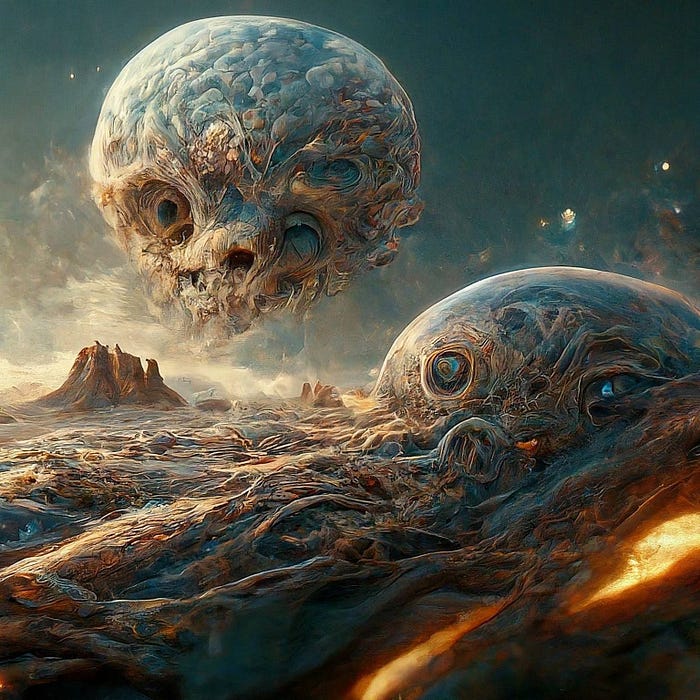
The search for intelligent extraterrestrial life has captivated scientists and enthusiasts alike for decades. One of the most ambitious projects in this field is the Breakthrough Listen initiative, which aims to scan the cosmos for potential signs of life beyond Earth. By utilizing advanced technology and methodologies, researchers strive to unlock the mysteries hidden within distant star systems. A significant aspect of this initiative involves analyzing data from the Kepler space telescope, which has revolutionized our understanding of exoplanets and their potential habitability. This article delves into the purpose of Breakthrough Listen and the methods employed to detect possible extraterrestrial technosignatures.
Purpose of the Breakthrough Listen Initiative
The primary goal of the Breakthrough Listen initiative is to systematically search for evidence of intelligent extraterrestrial life. This is achieved through the use of powerful telescopes and sophisticated algorithms that analyze signals from across the universe. By focusing on regions of space with a high density of stars, researchers aim to identify unusual patterns that may suggest the presence of advanced civilizations. The initiative is also designed to engage the public, fostering a greater understanding of the possibilities that lie beyond our planet. Ultimately, the quest for extraterrestrial signals reflects humanity’s age-old desire to understand our place in the universe.
Significance of Analyzing Kepler’s Light Curves
The Kepler space telescope has played a crucial role in enhancing our knowledge of exoplanets by uncovering thousands of potential planetary candidates. Light curves, which represent the brightness of stars over time, are vital in identifying these planets. Any dimming of a star’s light can indicate a planet transiting in front of it, an event that can provide insights into planetary size, orbit, and atmosphere. Such analysis not only unveils the existence of exoplanets but also serves as a foundation for identifying anomalies that warrant further investigation. Understanding these light curves is essential for narrowing down targets for the search for extraterrestrial intelligence.
Algorithm Development for Anomaly Detection
To elevate the search for extraterrestrial life, researchers developed an algorithm tailored for detecting anomalies in light curves. This algorithm identifies transits that deviate from established patterns, focusing on variations in timing or depth that could suggest unusual objects or phenomena. These anomalies could potentially be indicative of technosignatures, advanced emissions, or artificial structures orbiting stars. The algorithm’s application to the Kepler data has enabled the identification of several promising candidates, marking a critical step in the ongoing search for intelligent life. This integration of machine learning with astronomical data analysis demonstrates the potential of computational techniques in
SETI research.
Potential Implications of Extraterrestrial Technosignatures
The identification of anomalous transits raises fascinating implications for the existence of extraterrestrial civilizations. If these anomalies are confirmed to be technosignatures, they could reshape our understanding of life in the universe. The possibility of detecting advanced technologies would provide strong evidence that we are not alone. Furthermore, this discovery would spark a renewed interest and investment in astrobiology and related fields. It could also lead to international collaboration as humanity seeks to comprehend the implications of contact with intelligent extraterrestrial life.
Need for Further Investigation of Identified Anomalies
While the identified anomalies are intriguing, researchers emphasize the necessity for further investigation to confirm their origins. Detailed follow-up studies are needed to ascertain whether these transits truly signify extraterrestrial activity or if they stem from mundane astrophysical phenomena. This careful scrutiny is crucial to avoid drawing premature conclusions based on incomplete data. As technology continues to advance, researchers are optimistic about developing more refined methods to investigate these anomalies. Ensuring rigorous scientific validation in this field is paramount for establishing credible claims regarding extraterrestrial life.
Impact of Advanced Algorithms on SETI Research
The advent of advanced algorithms has revolutionized the Search for Extraterrestrial Intelligence (SETI). These technologies enable researchers to analyze extensive datasets with unprecedented precision, identifying patterns that may have gone unnoticed. The collaboration between data science and astronomy opens new avenues for understanding the cosmos. As researchers uncover more anomalous signals, our comprehension of potential life beyond Earth becomes increasingly nuanced. The Breakthrough Listen initiative exemplifies how innovative approaches can propel our search for extraterrestrial civilizations into new frontiers.
In conclusion, the Breakthrough Listen initiative represents a significant advancement in our quest to find extraterrestrial life. By leveraging the capabilities of the Kepler space telescope and innovative algorithms, researchers are poised to uncover potential signals that could change our understanding of the universe. The hope of discovering technosignatures fuels scientific inquiry while igniting public imagination. As we continue to explore the cosmos, every anomaly found carries the promise of deeper insights into the possibility of life beyond our planet.
Oliviero Mannucci
Source: Medium
A Journey Through Time: Unearthing Our Shared Past with Neanderthals
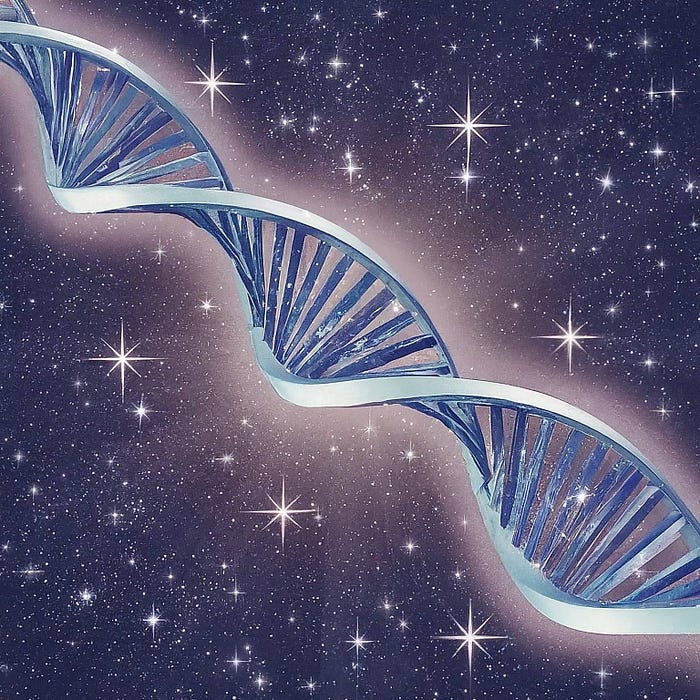
The ancient tapestry of human history is far more intricate than we once believed, particularly regarding our relationship with the Neanderthals.
Recent discoveries have shed new light on the genetic interconnections between our ancestors and these enigmatic cousins, challenging long-held notions about our evolutionary journey. At the forefront of this fascinating research is Joshua Akey and his team, whose work is revolutionizing our understanding of the deep, intertwined histories of modern humans and Neanderthals.
The significance of these findings cannot be overstated.
For
decades, the first Neanderthal discovery in 1856 was merely a
curiosity, an outlier in the chronicle of human evolution. Yet, as we
delve deeper into our genetic code with sophisticated tools and
methodologies, we unravel a story of survival, adaptation, and
coexistence. The advancements in understanding Neanderthal intelligence,
culture, and societal structure are particularly compelling, painting a
picture of a species not so different from ourselves.
The use of
artificial intelligence, such as the IBDmix tool, in analyzing genetic
data has opened new windows into our past. Through this cutting-edge
technology, Akey's team has been able to identify multiple waves of
interaction between humans and Neanderthals spanning over several
millennia. These encounters, ranging from 250,000 to 60,000 years ago,
were not isolated events but rather a fundamental aspect of our shared
history, indicating a level of interaction that was essential for the
survival and evolution of both species.
Moreover, the research has
brought to light the presence of modern human DNA in Neanderthals and
vice versa, suggesting that the offspring of these inter-species unions
were accepted into Neanderthal groups. This dynamic of early human
movements and exchanges is further supported by archaeological evidence
of cultural and tool exchanges, highlighting an era of shared knowledge
and mutual benefit.
Lastly, the discovery of the Denisovan presence
in Asia adds another layer to this complex story of ancient interaction.
The Denisovans, another group of ancient humans who shared our world,
play a critical role in understanding the full extent of these
prehistoric connections. Their existence exemplifies the diversity of
hominid life on Earth and underscores the importance of continuing our
exploration into the depths of human history.
In conclusion, the work
of Joshua Akey and his collaborators not only illuminates the genetic
entanglements of our species with Neanderthals but also celebrates the
shared journey of humanity. As we uncover more about our ancient past,
we find that our story is not one of isolation but of constant, intimate
interaction with those who walked the Earth before us. The implications
of these discoveries are profound, reminding us of the
interconnectedness of all human life.
Oliviero Mannucci
Source: Medium
Unveiling the Mysteries of the Bada Valley Rock Mural
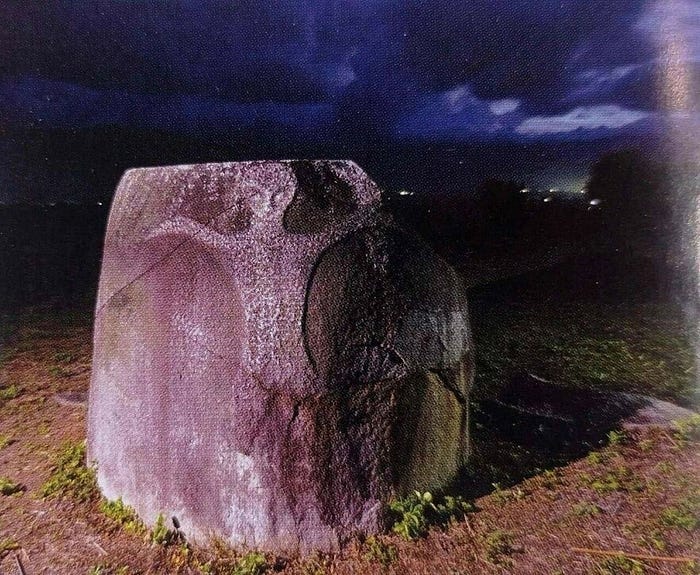
The discovery of a rock mural in the Bada Valley of Indonesia offers a captivating glimpse into the ancient world, revealing the artistic and cultural expressions of people who lived between 2375 and 3440 years ago. This mural is not only a remarkable testament to the creativity of early human civilization but also serves as a vital link to understanding the social dynamics and beliefs of the time. The Bada Valley, known for its array of megalithic artifacts and rock art, stands out as a significant archaeological site that continues to intrigue scholars and enthusiasts alike.
Location and Significance
Nestled in the heart of Sulawesi, Indonesia, the Bada Valley is an area steeped in historical and cultural richness. The rock mural discovered here is of profound importance, not only due to its age but also because of its unique depiction of a non-human figure. This striking imagery carved into the valley's landscape suggests that the area was a significant cultural and spiritual hub for the local tribes. Through the study of such murals, researchers can glean insights into the customs, beliefs, and artistic expressions of ancient societies, further highlighting the mural's invaluable contribution to our understanding of human history.
Timeframe and Artistic Endeavor
Dating back to a period between 2375 and 3440 years ago, the rock mural is a silent testament to the artistic abilities and imaginative prowess of its creators. The era, marked by burgeoning societal developments and complex belief systems, saw the emergence of such art forms as a means of expression and communication. This mural, in particular, reflects the intricate relationship between humans and their environment, as well as their understanding of themselves and the unseen forces of their world.
Mysterious Figures and Interpretations
The central figure of the mural, intriguingly non-human in appearance, is depicted with arms wide open—a posture that could symbolize a multitude of meanings ranging from peace to aggression. The ambiguity of the figure's pose invites speculation and analysis, underscoring the complexity of ancient symbolic language. While the exact interpretation remains a subject of debate among historians and archaeologists, the depiction is undeniably significant, offering a window into the psyche of our ancestors and their perceptions of the world around them.
The Aggression Theory
The theory suggesting that the open-armed posture signifies aggression draws support from anthropological observations of primitive behaviors, where humans, much like wild animals, adopted poses to appear larger and more formidable to their adversaries. This interpretation implies that the mural could represent a moment of conflict or a display of power, thereby shedding light on the social dynamics and conflict resolution methods of the time. Such insights are crucial for understanding the societal structures and interpersonal relationships of ancient communities.
Cultural Impact on the Bada Valley Tribe
The decision to immortalize this encounter on stone suggests that the event had a profound impact on the local tribe's cultural practices and beliefs. Whether as a warning, a celebration of victory, or a spiritual emblem, the mural has indubitably influenced the narrative and cultural evolution of the community. The continued study of these artifacts offers valuable lessons on the adaptability, creativity, and resilience of human societies in the face of change and adversity.
Conclusion
The Bada Valley rock mural stands as a poignant reminder of humanity's enduring spirit and its incessant quest for expression and meaning. As we delve deeper into our past, exploring such ancient artworks, we are reminded of our shared heritage and the intricate tapestry of human history that connects us all. The mural, with its enigmatic figure and ambiguous message, continues to fascinate and inspire, prompting reflection on our origins, our beliefs, and the infinite possibilities of human creativity.
Oliviero Mannucci
Source: Medium
Unveiling the Shadows: A Critical Look at the AARO UAP Historical Review Process

The
AARO UAP Historical Review has been a subject of considerable debate
and anticipation within the community concerned with unidentified aerial
phenomena (UAP). Following the release of Part 1, many, including
myself, have felt a mixture of disappointment and concern over the
approach and conclusions presented by the authorities involved. The
eagerness for Part 2 of the report is palpable, especially in light of
the criticisms leveled against the initial release. This article
endeavors to dissect the array of critiques associated with Part 1,
while also setting the stage for what might be expected from the
forthcoming segment of this probing investigative series.
Critiques of AARO UAP Historical Review Part 1
The
first installment of the AARO UAP Historical Review came under fire for
several glaring oversights and methodological shortcomings. Critics
were particularly vocal about the apparent refusal to entertain the
possibility of Non-human Intelligence, casting a shadow on the breadth
and depth of the review. The constrained lens through which the data was
examined seemed to preemptively exclude a host of explanations beyond
the extraterrestrial hypothesis, which itself was discounted due to a
purported lack of evidence. Moreover, the litany of inaccuracies and
omitted cases pointed to a selective review process, potentially
undermining the report’s credibility.
Expected Scope of Historical Review Part 2
Anticipation
surrounds the scope and direction of the Historical Review’s second
part. Given the criticism of Part 1’s early release and its
shortcomings, Part 2 is expected to address these issues head-on.
Furthermore, this continuation presents an opportune moment for a
comprehensive rebuttal of the critiques, offering clarifications and
incorporating previously disregarded data. The involvement of
Kirkpatrick, despite his shift from directorial to an advisory role,
raises questions about the potential continuity or deviation from Part
1’s methodologies and conclusions.
Delays in Delivery of the Full Report
The scheduled delivery of the full report, originally set for June, has been notably delayed, sparking debate and speculation among observers. This postponement has led to inquiries regarding the reasons behind the delay, including whether an extension was granted by congressional mandate. Such delays not only stoke curiosity but also fuel skepticism regarding the transparency and efficiency of the review process.<
Public and Congressional Reaction to the Delay
The delay in the release of Part 2 has not gone unnoticed, drawing reactions from both the public and congress. The anticipation for the second part of the report is twofold: there is eagerness for a more thorough and inclusive investigation, and there is hope that the forthcoming findings will rectify the perceived shortcomings of the initial report. The manner in which the second part addresses these concerns will be pivotal in shaping the public and legislative discourse moving forward.
Anticipations for Part 2's Content and Approach
As we stand on the cusp of the release of the Historical Review's second installment, there is a collective hope for a report that is not only comprehensive but also transparent in its methodology. The anticipation extends to the inclusion of a wider array of potential explanations for UAP, beyond the narrow confines previously established. Additionally, there is a desire for the report to present a balanced critique of its own findings, potentially paving the way for future research and discussion within this enigmatic field.
Potential Impact of Part 2 upon Release
The release of Part 2 of the AARO UAP Historical Review holds the potential to either vindicate or exacerbate the criticisms of the initial release. Should Part 2 succeed in addressing the array of concerns raised by critics, it could mark a significant step forward in our understanding of UAP and the processes governing their investigation. Conversely, a failure to adequately address these issues could further mire the review in controversy, impacting the credibility and future of the AARO UAP Historical Review process.
In conclusion, the forthcoming release of Part 2 of the AARO UAP Historical Review represents a critical juncture for all stakeholders involved. The need for a meticulous, transparent, and inclusive approach has never been more apparent, as both the scientific community and the public seek clarity and comprehensiveness in the ongoing investigation of unidentified aerial phenomena.
Oliviero Mannucci
Source: Medium
2024 AD - Becoming President of the USA through transparency on UFOs
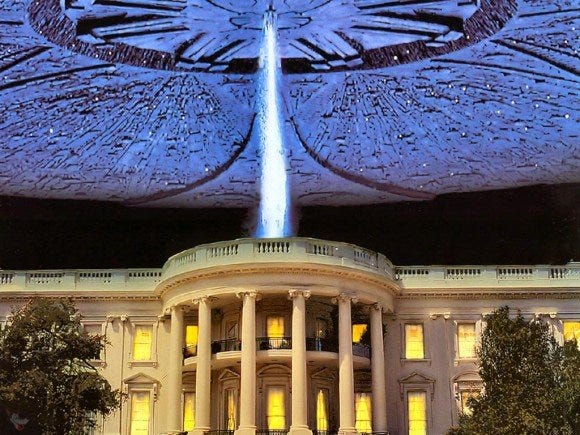
Since retired Major David Grusch last year accused the Department of Defense of hiding ships and bodies of non-terrestrial intelligence, a lot of water has passed under the bridge and many things have happened. In the meantime, the authenticity of the controversial Nazca mummies presented by the Mexican journalist Maussan has been established, and Colonel Carl Nell confirmed at SALT in New York what David Grusch declared last year, namely that it is not a secret in military circles that the Earth is an object of interest by non-human beings. Furthermore, Harvard University has recently declared that on Earth man has coexisted with crypto-terrestrial beings since time immemorial (which therefore in turn confirms the so-called Nazca mummies). So now the limit is full, and the next president of the USA will necessarily have to deal with these burning topics.
Talk of unidentified anomalous phenomena (UAPs) or UFOs has steadily evolved from fringe conspiracy theories to a legitimate national security concern. This change in perception has been mirrored by a growing public demand for transparency and disclosure of relevant government documents. As the 2024 presidential election approaches, the question of whether candidates will commit to releasing these documents has become a hot topic of discussion. The stakes are high, as the next president’s stance on UAP disclosure could significantly affect government transparency policies and public trust.
Candidates' position on UAPs in the 2024 elections
Recent social media campaigns have sought to place UAP disclosure at the forefront of the agendas of 2024 presidential candidates. These campaigns argue that candidates, regardless of their political affiliation, should openly engage in the declassification of UFO-related documents . This call to action highlights a broader desire for honesty and openness within the federal government, urging candidates to prioritize transparency in their policy proposals.
Public request for disclosure of UFO documents
There is a growing consensus among the American public on the need to lift the veil of secrecy surrounding the UAP documents. This call for declassification is not driven simply by curiosity but by a genuine concern for national security and government accountability. The public seeks factual information about UAPs to better understand potential threats and foster an environment of trust between the government and its citizens.
Historical stigma and its impact on whistleblowers
The stigma surrounding UFOs has long dissuaded whistleblowers from providing information. Prominent figures, such as Bob Lazar, were discredited and faced professional exile for their claims regarding government knowledge of extraterrestrial technology. This historical context highlights the need for cultural and procedural change within government agencies, fostering an atmosphere in which discussion of UAPs is not ridiculed but encouraged for the sake of transparency.
Bipartisan Congressional Efforts for Transparency
In an era marked by divisive politics, UAP disclosure represents a rare bipartisan issue. Initiatives such as the proposed UFO disclosure law demonstrate both parties' commitment to revealing the truth. These legislative efforts highlight the growing consensus that understanding and recognizing the existence of UAPs is crucial to national security and scientific progress.
Impact of teasing in political debates
The trivialization of UAP-related questions in political debates, as seen in previous exchanges, only serves to undermine public trust in elected officials. When candidates dismiss questions or respond with derision, they signal an unwillingness to seriously address voters' concerns. Such attitudes impede productive discourse and contribute to an environment of skepticism and disenchantment with the political process.
Implications of nondisclosure for national security
Maintaining the status quo of secrecy surrounding UAPs has tangible national security implications. Without public disclosure and informed discourse about the nature of UAPs, strategizing a comprehensive defense or understanding potential technological advances remains a challenge. A commitment to transparency and declassification of relevant documents could pave the way for greater preparedness and a safer nation.
Potential legislation and presidential
The push for disclosure of UAPs has made its way into the halls of Congress, prompting legislative proposals to force the release of classified documents. Such legislation, if passed, would not only mark a significant step toward government transparency but would also redefine presidential authority regarding national security secrets. The passage of these bills could serve as a catalyst for change, forcing future administrations to prioritize openness and truth in their governance.
Ultimately, the conversation surrounding UAP disclosure in the 2024 presidential election intersects with broader issues of government transparency, national security, and public trust. As candidates outline their positions on this issue, their answers will likely reflect their broader vision for America’s future. The time has come to reevaluate the layers of secrecy that have long obscured the truth about UAPs, calling for a new era of openness and accountability in American politics. In the meantime, the mediators of political debates on TV are starting to ask increasingly slippery questions to the candidates in the running who will necessarily have to read up on the subject, as trying to evade these questions is equivalent to telling the voters: if I am elected I will continue with the old politics of government cover-ups, and that could mean the difference between not getting elected and getting elected.
Oliviero Mannucci
Source: Medium
EBE & UAP Consultant for space and military organizations, film and TV technician, amateur astronomer from 1975, science communicator, blogger & more
Saturday, August 10, 2024
THE TIME IS RIPE - New Beginning

Hello everyone! It's been a while since I updated this historic blog of mine on UFOs and related phenomena. A lot of water has passed under the bridge and even though I am now present on X, Reddit, Discord, Tumblr, Bluesky, Truth, Geetr, Gab, Vero, Mastodon, Medium and other platforms, I will return to using this blog too. So fasten your seatbelts because we're starting again, and in the next posts I will provide you with the links where to find me, so you can follow me wherever it is most convenient for you.
Oliviero Mannucci
